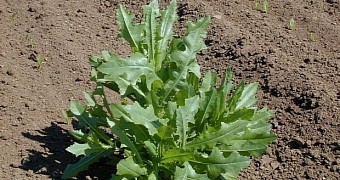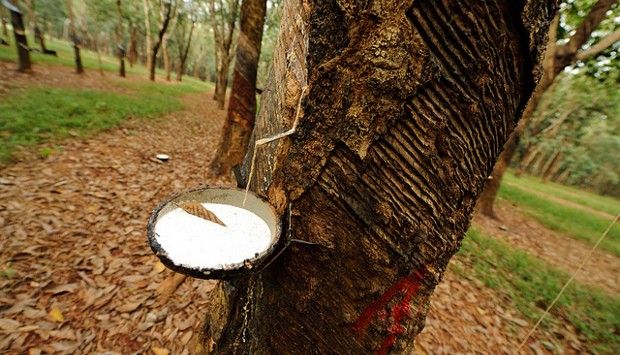You might not know it by its official name, i.e. the pompous-sounding Lactuca serriola, but chances are you are all too familiar with prickly lettuce. This plant, described by researchers as the ancestor and wild sibling of the lettuce we add to hamburgers, is viewed as a common weed.
Farmers loathe and despise it, what with its habit of growing smack in the middle of their crops, and regular folks are utterly and completely unimpressed by it. Truth be told, it's not like its looks or anything else about it is even remotely fascinating and worthy of our attention, right?
Well, not quite. According to a recent Washington State University study, this weed has the potential to become a cash crop, given the right genetic engineering experiments. Thus, it appears that the boots and surgical gloves of the future could be made from prickly lettuce, as odd as this might sound.
Turning prickly lettuce into a cash crop
In a paper in the Journal of Agricultural and Food Chemistry, the Washington State University scientists explain that, according to their investigations into the matter at hand, a milky white sap produced by this common weed could serve as a raw material for rubber production.
To obtain the right amounts of sap to sustain rubber production, the researchers imagine using genetic engineering to create a new generation of prickly lettuces that have multiple stems and that bolt early. These features would allow several harvests over the course of a growing season and maximize yields.
The specialists have so far identified the genetic markers that influence how much sap the weed produces, how many stems it has and when it bolts. They now want to toy with these markers and give prickly lettuce plants the features that would make them good candidates for rubber production.
“I think there's interest in developing a temperate-climate source of natural rubber,” said Washington State University Ian Burke in an interview. “It would be really great if prickly lettuce could become one of those crops,” the specialist went on to comment on his and his colleagues' work.
The perks of making rubber from lettuce
These days, we use rubber to make surgical gloves, boots, tires and many other things without which we simply couldn't make do. In their report in the Journal of Agricultural and Food Chemistry, the scientists explain that, of the rubber used to make these commodities, about 50% is synthetic.
What this means is that it is derived from petrochemical sources, and consequently, it is a source of environmental pollution and a driver of climate change. On the other hand, our single most important source of natural rubber, the rubber tree, is threatened by disease.
The Washington State University researchers believe that, were we to use genetic engineering to turn prickly lettuce into a cash crop and have it support rubber production, the move would not only benefit the environment but also offer us an alternative in case rubber trees one day disappear altogether.

 14 DAY TRIAL //
14 DAY TRIAL // 

